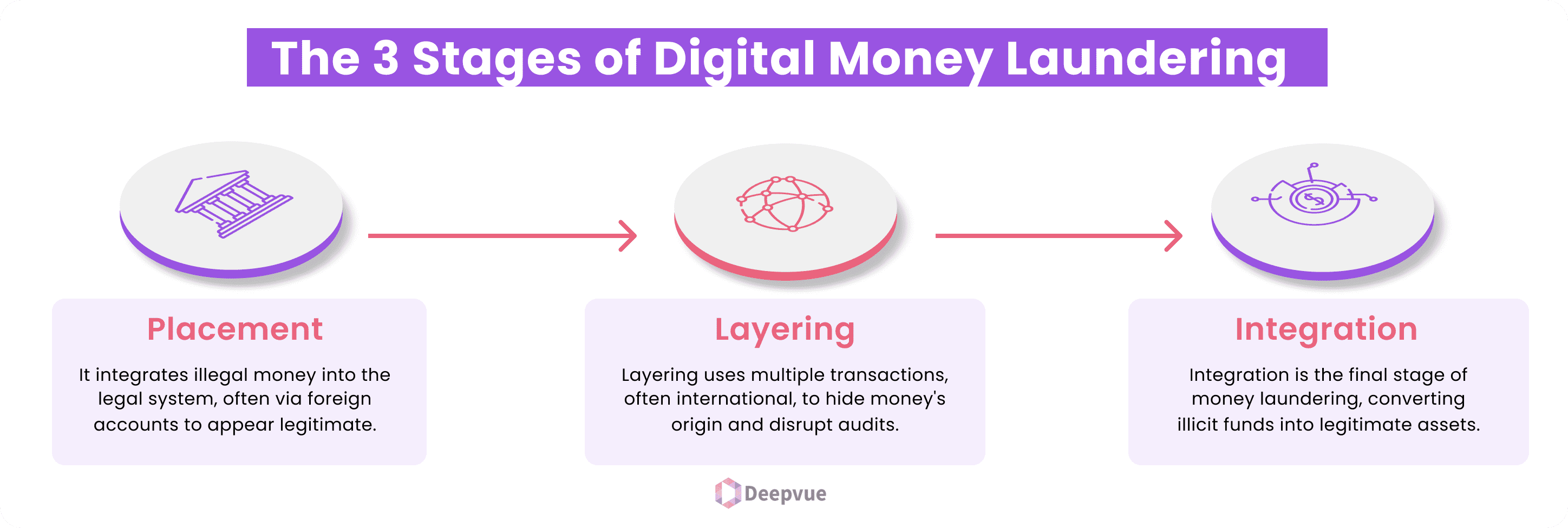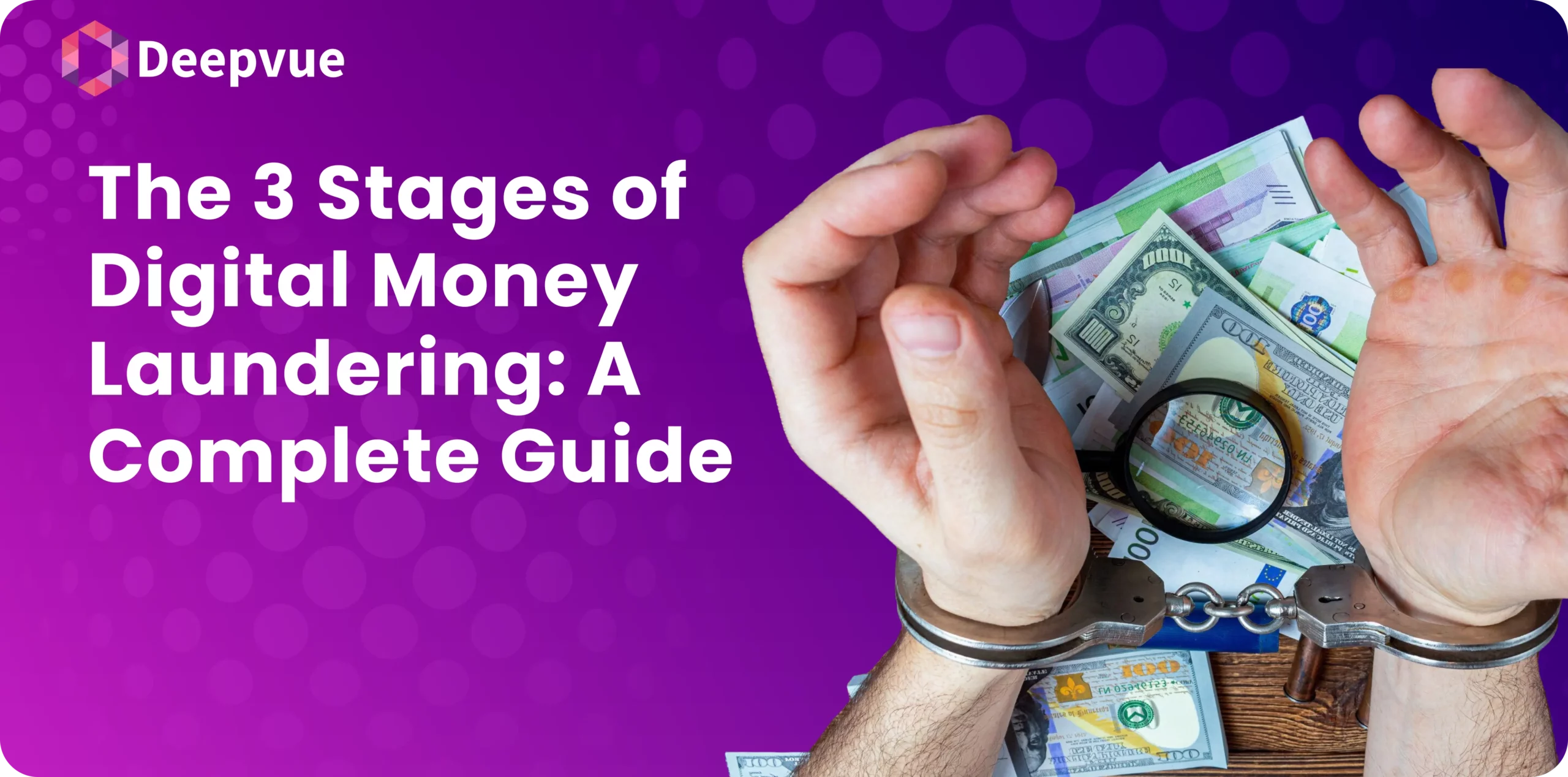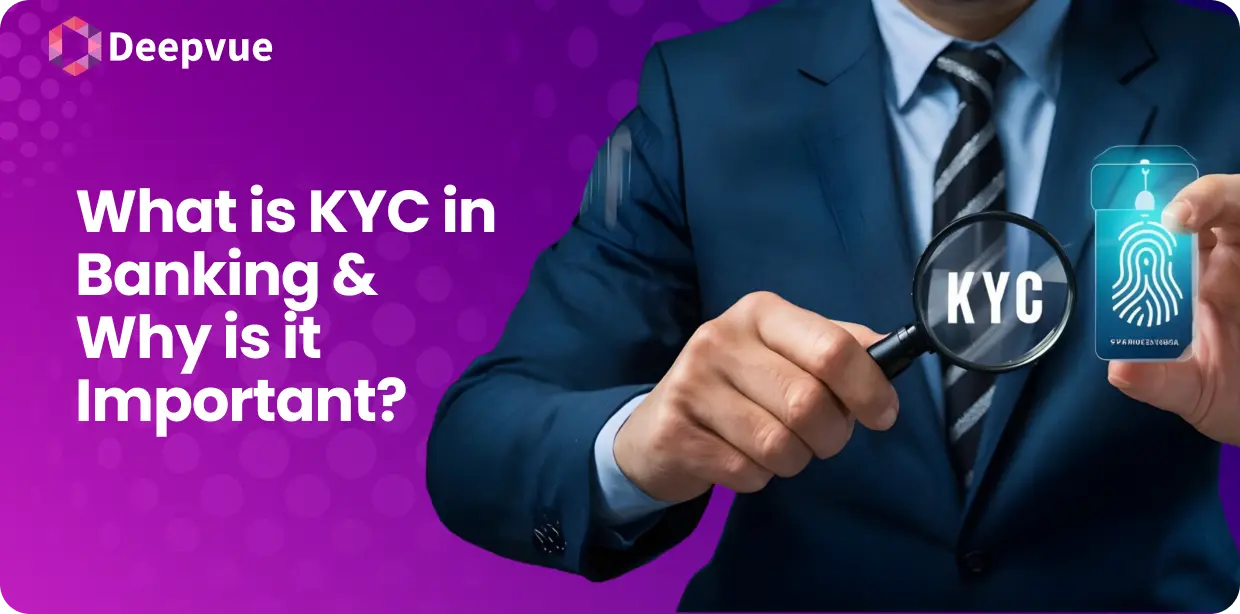Digital money laundering is a financial crime; it diverts the origin of money obtained illegally by incorporating complex transactions and making it look like white money or legally obtained money.
What is Digital Money Laundering?
Digital money laundering is the process of hiding the origin of money obtained through illegal activities such as drug trafficking, bribery, or other criminal activities. Digital money laundering is used to convert illicit money to legal or white cash so that the criminal can use it without fear of being caught by the authorities.
The major problem that arises due to this digital money laundering activity is that the criminal group uses this money to empower and expand their illegal activities and puts public safety and national security at stake.
Methods of Digital Money Laundering
Criminals use many methods for digital money laundering, and some of the standard methods are as follows:
Cash smuggling
Cash smuggling is a method of transferring and depositing illegally obtained money in foreign banks and converting it into clear or white money to finance criminal activities.
Gambling or betting
In this method of digital money laundering, illegally obtained money is used for betting or gambling by using casinos or online gaming platforms as layering and redefined as a source of funds.
Shell companies
Shell companies are fake companies that have been incorporated to route transactions. In digital money laundering, such companies are used for layering and covering up illegal money to clear money.
Money Mule
A money mule can also be called a mediator. A money mule receives money from a third party in their account and transfers this money to another account or withdraws it and gives the cash to another person. They do this transaction either knowingly or unknowingly by charging a commission.
In some cases, people are tricked into becoming money mules by transferring cash and allowing their accounts to be used for someone else’s benefit.
The 3 Stages of Digital Money Laundering

The digital money laundering process involves multiple stages to convert money from illegal to legal, and criminals mainly follow three stages to complete the digital money laundering.
Stage 1: Placement
It involves the process of putting illegal money into the legal financial system. Generally, this is done by transferring money to foreign bank accounts. After this process, money looks cleaner and can be used as legal money.
In this stage, a large amount of money is divided into small and less suspicious amounts, which can be deposited into single or multiple accounts using different techniques.
Some of the techniques of digital money laundering are:
Dummy invoices: Criminals can send dummy invoices to match the cash lodged. Sometimes, they may also over-invoice or under-invoice or falsely describe goods and services provided to others to match the amount of money to be placed.
Repayment of loans or credit card bills: Money can be used to repay the loan or credit card bills of lenders who may not be under the authorities’ scanner.
Blending funds: This process involves mingling illegal money with legal businesses, in which daily cash sales are ordinary. This practice makes it difficult for AML (Anti-Money Laundering) enforcement agencies and the The Financial Action Task Force (FATF) to track them.
Stage 2: Layering
As the name suggests, layering means performing multiple financial transactions to hide the origin of money obtained. This is generally done to disturb the audit trail; this part involves multiple business transactions, even international transactions, to clean the money.
Some examples of layering are as follows:
1. Moving money: This involves moving money from one country to another using tricks or techniques that help the criminal avoid being caught by the authorities.
2. Investing in stocks: Criminals might invest their money in stocks for the long term, where no one checks the source of the money.
3. Investing in real estate: Investing in properties is always a great option for criminals as it creates assets for them. Also, it is difficult for the authorities to track if the sale of the deed happens without proper documentation.
4. Investing in shell companies: Criminals might invest their illegal money in shell companies, which are generally incorporated to rotate money and do not have actual businesses.
Stage 3: Integration
Integration is the final stage of digital money laundering, as after layering, the illegal money has already been converted into legal money and become part of the legal financial system. In the integration stage, money gets back to the criminals as legal money, and now, they can explain the source of funds, e.g., the sale of stock or real estate, etc.
If the criminal successfully implements all the stages of digital money laundering, they can use this money again for illegal activities without any fear of being caught.
There are some examples of the integration of money:
- Fake employees: The company may transfer the money to the criminals, representing them as employees.
- Dividends: These payments can be made to company shareholders who might be criminals.
- Loans: The company can give out loans to executives on the board or shareholders, which will never have to be repaid.
Tips to Prevent Digital Money Laundering
Digital money laundering can be prevented by appointing anti-money laundering agents to organizations. These agents will look after the transactions, and suspicious transactions will be put under scanner to avoid digital money laundering.
Conclusion
Digital mmoney laundering is a serious issue, as it affects not only the single party or organization where it takes place but also the safety of the public and the nation. It can be tackled by implementing anti-money laundering compliance or by appointing anti-money laundering officers.
With Deepvue, digital money laundering can be prevented as they do the required anti-money laundering compliance so that they can restrict the movement of illegal funds through their platform to convert them into legal or clear money.
FAQs
What is money laundering
It is a process of conversion of illegal money to legal money by doing complex transactions to support and fund criminal activities.
Can money laundering be prevented?
Yes, money laundering can be prevented by compliance with anti-money laundering policies or by appointing an anti-money laundering agent in the organization.
What is an anti-money laundering policy?
An anti-money laundering policy is a set of laws, regulations, and procedures that uncover illegally obtained money.








